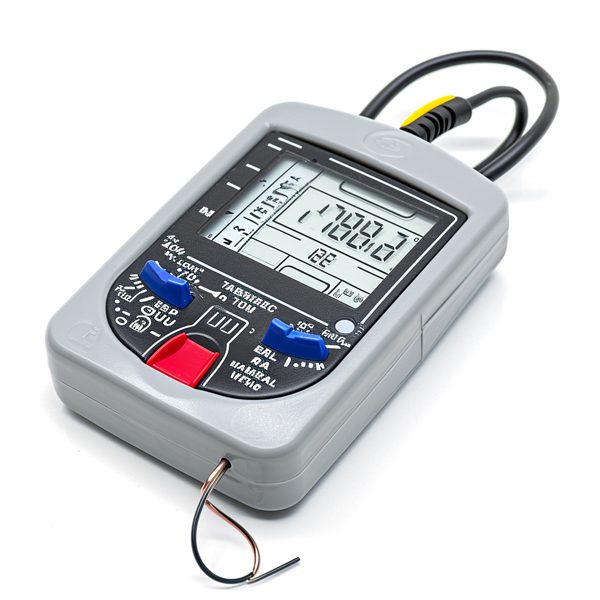Experiencing rough idling, sudden stalls, or a lack of power in your ride? It’s possible your throttle position sensor (TPS) is sending out an SOS. As a seasoned car enthusiast, I’ve learned that pinpointing TPS issues can save you time and money.
Testing your TPS isn’t just smart‚ it’s essential for maintaining your vehicle’s performance. I’ll guide you through the troubleshooting process so you can detect problems before they hit your wallet. Let’s rev up and get to the heart of TPS diagnostics.
What is a Throttle Position Sensor (TPS)?
As I delve deeper into the world of automotive care, it’s important to understand the crucial components that keep our vehicles running smoothly. A throttle position sensor, or TPS, is a key player in managing engine performance. Its primary job is to monitor the position of the throttle in an internal combustion engine. Essentially, it tells the engine’s computer how far the throttle is open and how hard you’re pressing the accelerator pedal.
Why is the TPS Important?
The information from the TPS is critical for the following reasons:
- It helps to calculate air and fuel mixtures.
- It influences ignition timing.
- It aids in managing automatic transmission shift points.

Recognizing a Faulty TPS
Identifying a defective TPS involves attention to your car’s behavior. Here are some symptoms that might suggest a TPS issue:
- Inconsistent idling
- Hesitation or stumbling when accelerating
- Surging while maintaining a steady speed
- Sudden changes in engine power
Testing the TPS: A Preliminary Step
Before diving into testing, it’s beneficial to inspect the TPS visually for any obvious signs of damage or wear. Additionally, checking the connections to ensure they are secure and free of corrosion can save you unnecessary troubleshooting.
It’s also important to consult the vehicle’s service manual for specific TPS testing procedures, as they can vary between makes and models. Typically, the testing involves using a multimeter to check the voltage changes as the throttle opens and closes. Accurate readings are crucial to determine if the TPS is functioning within the manufacturer’s specified range.
Regularly checking the throttle position sensor shouldn’t be overlooked. It’s a straightforward task that plays a significant role in your car’s performance and longevity. By becoming familiar with the TPS, you’re taking an active step in maintaining your vehicle’s health and ensuring a smooth driving experience.
Common Symptoms of TPS Problems
When it comes to diagnosing issues with the throttle position sensor, knowing the symptoms can save you time and money. I’ve pinpointed several common indications that suggest the TPS may not be functioning correctly.
- Erratic Idle: The engine’s idle speed should be consistent. If I notice it fluctuating or the car seems to be idling too high or too low, it could be a sign the TPS isn’t reporting the correct throttle position.
- Acceleration Hesitation: When I step on the gas pedal and expect a smooth acceleration, but instead experience a delay or stumble, it might be due to incorrect signals from a faulty TPS.
- Engine Stalling: A clear sign that something’s amiss can be the engine stalling, especially when coming to a stop or during sudden acceleration, pointing to potential TPS issues.
- Unintended Surge: While maintaining a steady speed, if I feel the vehicle suddenly accelerate or surge, it could be indicative of intermittent TPS signal loss.

I also pay attention to the Check Engine Light. Modern vehicles are equipped with sophisticated onboard computers that trigger the warning light when the TPS sends out-of-range data.
The following table provides a quick reference for the key symptoms and their possible implication:
| Symptom | Implication |
|---|---|
| Erratic Idle | TPS may have incorrect throttle position reading |
| Acceleration Hesitation | Delayed response due to faulty TPS signals |
| Engine Stalling | Signs of TPS failure affecting fuel mixture |
| Unintended Surge | Intermittent signal loss from TPS |
By staying vigilant about these symptoms, I can prevent escalated problems and potential vehicle breakdowns. Regular maintenance and prompt attention to irregular performance are crucial in ensuring my car remains reliable and efficient. For those not experienced with car maintenance, it’s recommended to seek professional assistance when suspecting TPS problems.
Tools and Equipment for Testing TPS

When I’m diagnosing a problematic throttle position sensor, it’s crucial to have the right tools at hand. Without the proper equipment, accurately testing the TPS can be challenging. Here’s what you’ll need:
- Digital Multimeter: The centerpiece of TPS testing, this device measures voltage, resistance, and current. Make sure it’s set to the correct measurement type before starting your diagnostic.
- Vehicle Service Manual: Specifics can vary by make and model, so referencing your car’s manual provides the necessary voltage ranges and testing steps.
- Screwdriver Set: TPS sensors are often secured with screws, so having a complete set, including flat-head and Phillips-head, is beneficial.
- Torque Wrench: To avoid over-tightening and potentially damaging the TPS or screws upon reinstallation, a torque wrench is advisable.
- Safety Equipment: Always prioritize safety by wearing insulated gloves and protective eyewear during any electrical work.
With these tools at my disposal, I’m prepared to tackle TPS issues. I’ll start by ensuring the ignition is off before disconnecting the sensor. Then, I follow the steps outlined in the vehicle service manual to conduct voltage readings with the multimeter. Here are the steps I use:
- Locate the TPS and disconnect its electrical connector.
- Set the digital multimeter to measure volts DC.
- Connect the multimeter’s leads to the appropriate TPS terminals (as indicated in the service manual).
- Turn the ignition on, but don’t start the engine. This provides power to the circuit for testing purposes.
- Gradually open the throttle and observe the voltage. It should increase steadily without any sudden jumps or drops.
If the voltage reading is erratic or does not align with specifications, it indicates a potential problem. Remember, a steady hand and careful observations are key to an accurate diagnosis. Maintaining a methodical approach ensures a smooth troubleshooting process for the throttle position sensor.
Step-by-Step Guide to Testing Your TPS

When troubleshooting your vehicle’s throttle position sensor, having a clear set of instructions can help you quickly identify whether the TPS is the source of your car’s performance issues. Follow this straightforward guide to put your TPS to the test.
Start With Safety Precautions: Before I delve into the testing process, it’s essential to ensure that the engine is off and the car is secure. I always recommend wearing safety goggles and gloves to protect against potential hazards.
Locate the TPS: Using my vehicle service manual, I locate the TPS, which is typically mounted on the throttle body. This manual is my go-to reference for any vehicle-specific details vital for accurate testing.
Disconnect the Electrical Connector: I carefully disconnect the wire connector from the TPS by depressing its tab and pulling it away. This isolation will allow me to use my digital multimeter without interference from the vehicle’s electrical system.
Prepare the Digital Multimeter: Set your multimeter to measure volts DC. I ensure the leads are in the correct ports before testing. Red goes to the positive and black to the common or negative port.
Test the TPS Signal:
- I connect the positive lead of my multimeter to the signal wire and the negative lead to a good grounding point.
- With the ignition switch in the “ON” position but the engine off, I observe the multimeter reading as the throttle is gently opened.
- It’s critical to note the voltage at idle and the smooth increase in voltage as the throttle opens.
Assessing the Results: The voltage should smoothly increase; any spikes or drops may indicate a fault. Here’s a table that helps illustrate what I’m looking for:
| Throttle Position | Expected Voltage |
|---|---|
| Closed | 0.5 – 1.0 V |
| Half-open | Around 2.5 V |
| Fully Open | 4.5 – 5.0 V |
Smooth voltage progression is key. Anything outside of this range or any erratic changes while opening the throttle suggests it’s time for further inspection or potential TPS replacement.
By following these steps methodically, I get a comprehensive understanding of my TPS condition. Careful observation and meticulous work are my allies in ensuring my vehicle’s performance is optimal.
Interpreting TPS Test Results
After meticulously executing each step of the TPS testing guide, it’s time to interpret the results from the multimeter readings. Understanding what these numbers signify can be the difference between pinpointing a minor issue and overlooking a major fault.
Review the Voltage Readings
Firstly, recall the table provided earlier with the expected voltage progressions. These figures offer a baseline for normal TPS function:
| Throttle Position | Expected Voltage (V) |
|---|---|
| Closed | 0.5 |
| Half Open | 2.5 |
| Fully Open | 4.5 |
For accurate interpretation:
- Each reading should gradually increase or decrease in conjunction with the throttle’s movement.
- Any sudden spikes or drops in voltage are signs that the TPS might be faulty.

Analyze the Progression
Smooth voltage progression is critical. A healthy TPS will show a linear increase or decrease without sudden jumps. When I inspect the results, I look for consistency. If I spot irregular patterns, I consider:
- Worn or damaged TPS.
- Potential issues with wiring or connections.
Cross-Reference with Symptoms
The testing results should align with symptoms observed in the vehicle’s performance. These may include:
- Erratic idling.
- Sudden changes in engine power.
- Poor fuel efficiency.
If the symptoms and test results correlate, it’s further evidence of a TPS in need of attention.
Double-Check Connections
Before making a definitive judgment, I always double-check to ensure the TPS connector and wiring harness are secure since loose connections can mimic symptoms of a failing TPS. It’s crucial to confirm that any abnormalities found are indeed results of a faulty sensor and not mere connection issues.
After completing these checkpoints, I’ve equipped myself with detailed insight into the health of the throttle position sensor. Moving on, it’s about deciding the next best steps, whether it might be recalibration or replacement, based on the hard data gathered from the tests.
Potential TPS Repair Solutions
Once I’ve gathered accurate data from my TPS tests, it’s time to evaluate potential repair solutions. My experience tells me there are several avenues to consider:
- TPS Adjustment: Sometimes the sensor just needs recalibration. Many vehicles allow for slight adjustments to the TPS to correct the alignment and improve the signal. I’ll always check the service manual first, as this will guide me through the process and provide the correct specifications.
- Connector and Wiring Inspection: Before concluding the TPS itself is defective, I inspect all related wiring and connectors for signs of wear or damage. If there’s visible damage, I can often replace the wiring or connectors instead of the sensor.
- Sensor Cleaning: In certain cases, dirt and grime may interfere with the TPS’s operation. A careful cleaning with an appropriate electrical cleaner might save me the hassle and expense of a replacement.
- TPS Replacement: If all else fails, replacing the sensor may be my only option. I ensure to invest in a quality replacement part, as cheaper sensors could lead to more problems down the line.
When addressing TPS issues, I keep in mind the following:
- Ensure compatibility with your vehicle’s make and model.
- Use high-quality replacement parts to avoid repeated failures.
- Consult the vehicle’s service manual for specific repair procedures.
Here’s a checklist I rely on for TPS maintenance:
- Verify correct TPS output voltage range
- Cross-reference vehicle symptoms with TPS readings
- Double-check all electrical connections
- Seek professional advice when in doubt
By systematically ruling out simple fixes and confirming that a replacement is necessary, I can often save time and money. Moreover, ensuring that the repair is done correctly the first time around prevents further issues with my vehicle’s performance.
Frequently Asked Questions About TPS
Many car owners, facing TPS issues, often have a range of queries about their throttle position sensor and how to address problems. Here are some common questions I encounter:
Can a Throttle Position Sensor Be Cleaned?
Yes, a TPS can sometimes be cleaned to restore functionality:
- Remove the sensor carefully, following your service manual instructions.
- Use a specialized electronic cleaner, not a standard carburetor or brake cleaner.
- Spray the cleaner and gently wipe with a clean cloth.
- Avoid rough handling that can damage the sensor’s delicate components.
What Are the Signs of a Failing TPS?
Identifying a TPS issue early can prevent more significant problems. Look out for:
- Erratic idle: The engine might struggle to maintain a consistent idle speed.
- Acceleration issues: Hesitation or stumbling when you try to accelerate.
- Check engine light: The dashboard may show the check engine warning.
How Often Should a TPS Be Replaced?
A TPS doesn’t have a standard replacement interval. It should be inspected periodically and replaced if:
- Diagnostic tests indicate the TPS is malfunctioning.
- The vehicle has a rough idle or acceleration issues.
Is It Possible to Adjust a TPS?
Some TPS can be adjusted:
- Loosen the sensor’s mounting screws slightly.
- Rotate the TPS until you achieve the desired voltage.
- Tighten the screws and recheck the voltage.
Adjustments should be according to the vehicle’s specific voltage recommendations, which can often be found in the service manual.
Will a Bad TPS Throw a Code?
A malfunctioning TPS will usually trigger a diagnostic trouble code (DTC), which you can retrieve using an OBD-II scanner.
Can a Bad TPS Cause Transmission Issues?
Yes, since the TPS provides crucial data to the transmission control module, issues can lead to:
- Improper shifting points.
- Hard or delayed shifts.
- Transmission not shifting gears.
Understanding your vehicle’s TPS is crucial to diagnose and resolve issues quickly. While this guide covers familiar territory, remember to refer to your vehicle’s service manual for specific instructions or seek professional assistance if you’re ever hesitant about tackling a TPS problem on your own.
